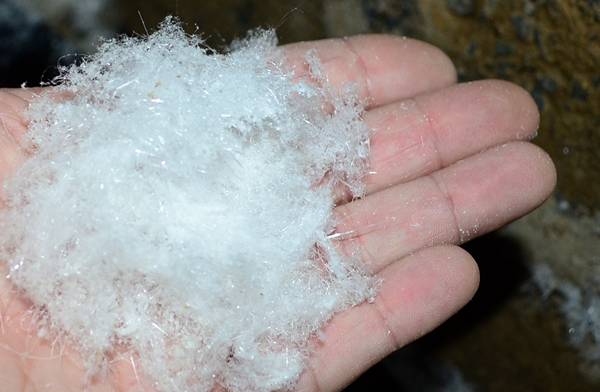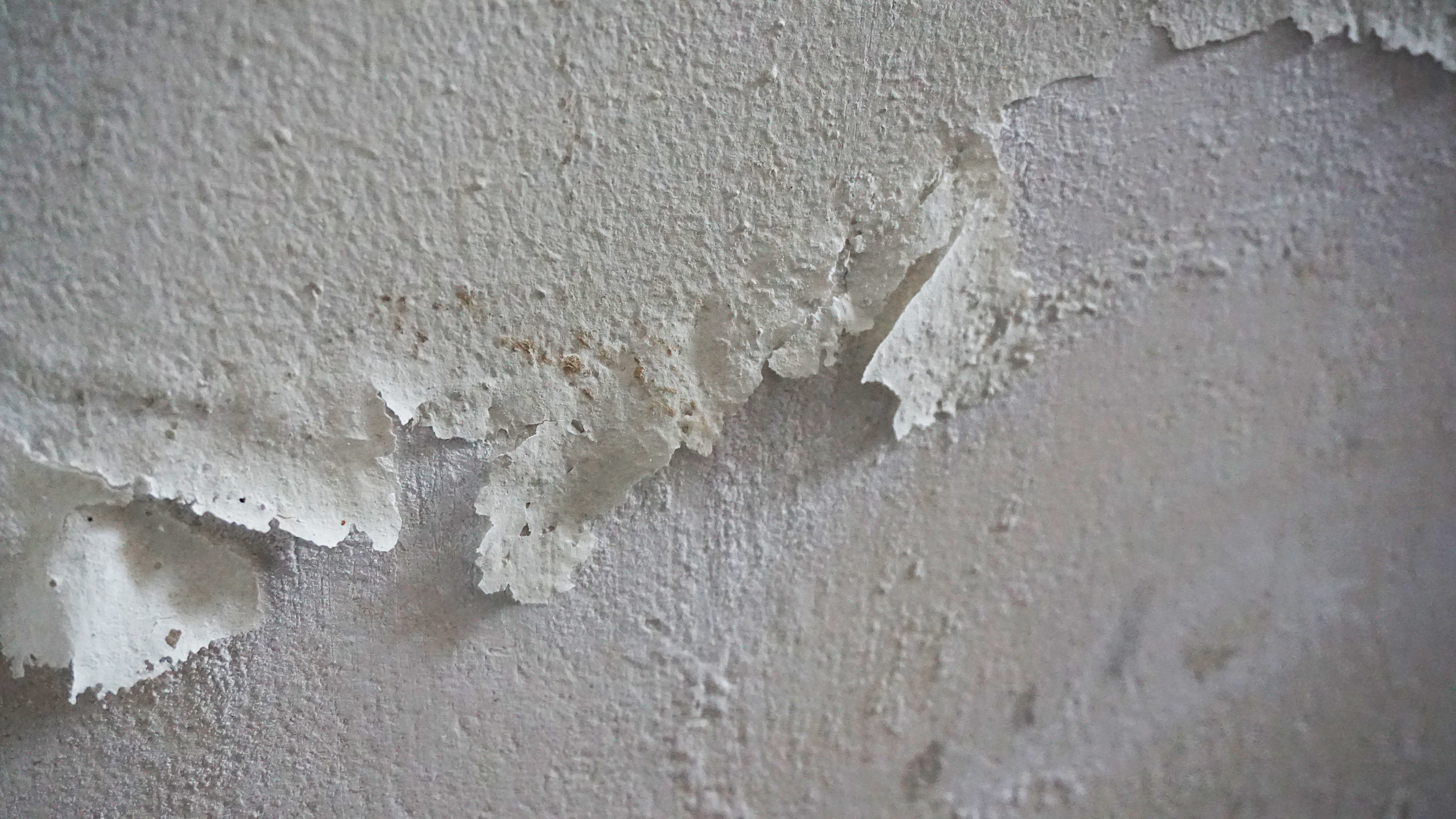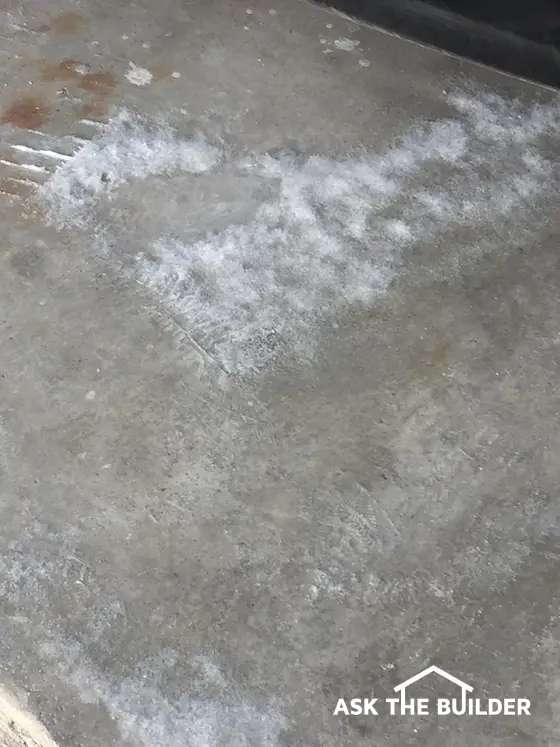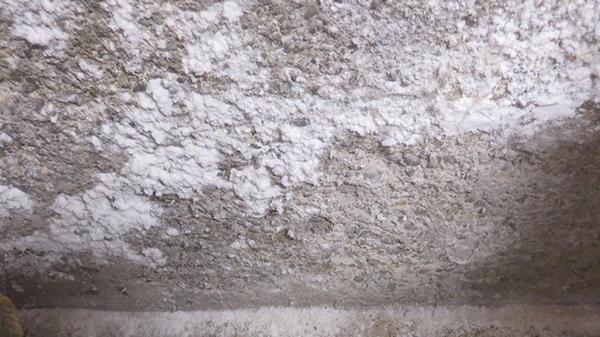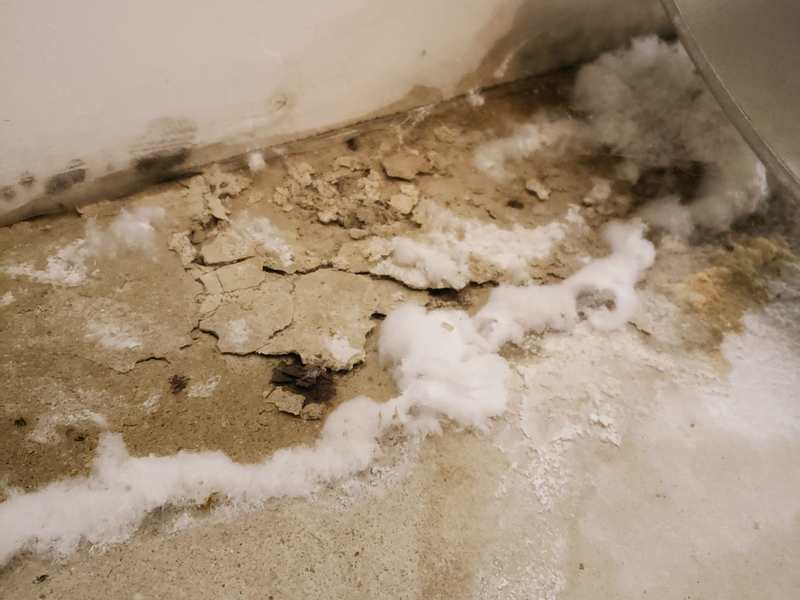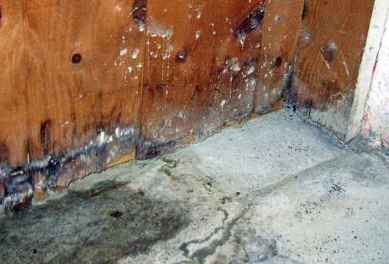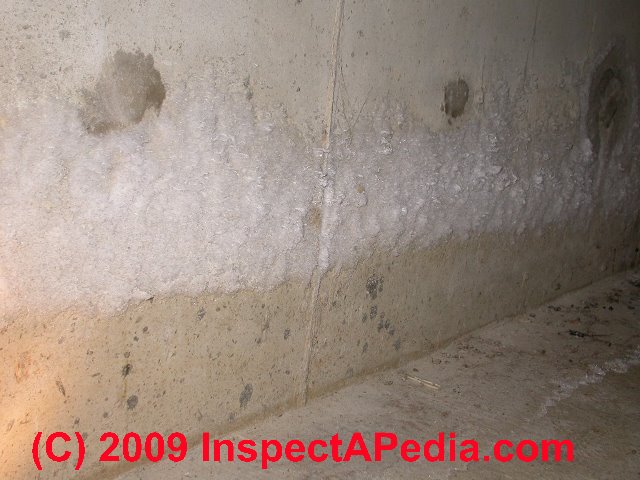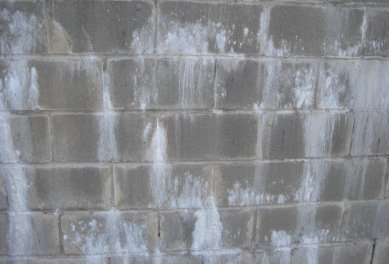The Origins and Characteristics of White Fluffy Deposits on Concrete Floors
White fluffy deposits on concrete floors can be a puzzling and unsightly issue. These mysterious substances often appear out of nowhere, leaving homeowners and facility managers scratching their heads. Let’s talk about the origins and characteristics of these deposits, shedding light on what they are and why they occur.
- The Composition of White Fluffy Deposits: White fluffy deposits on concrete floors primarily consist of efflorescence, a naturally occurring phenomenon. Efflorescence is caused by the movement of water-soluble salts to the surface of porous materials, such as concrete, where they crystallize. These salts, including calcium carbonate, calcium sulfate, and magnesium carbonate, give the deposits their characteristic white and fluffy appearance.
- Environmental Factors that Trigger Efflorescence: Efflorescence occurs when the concrete absorbs water, either from the ground or from within the material itself. Common triggers include excessive moisture, high humidity levels, and water intrusion from adjacent sources like leaky pipes or inadequate drainage systems. These factors create the perfect conditions for the salts to dissolve and migrate to the surface, resulting in the formation of white fluffy deposits.
- Visual Characteristics of White Fluffy Deposits: White fluffy deposits on concrete floors typically have a powdery or crystalline texture. They appear as a white or off-white residue, often with a fluffy or feathery appearance. The deposits can vary in thickness and coverage, ranging from thin, scattered patches to thick layers that completely coat the surface. In some cases, the deposits may also have a slightly glossy or waxy sheen.
- Seasonal Variations in Deposits: It is not uncommon for the appearance of white fluffy deposits on concrete floors to vary throughout the year. In regions with distinct seasons, efflorescence tends to be more prevalent during periods of higher humidity, such as spring and fall. During these seasons, increased moisture in the air and fluctuating temperatures contribute to the formation and migration of salts, leading to a higher occurrence of white fluffy deposits.
- Harmless Nature of White Fluffy Deposits: While white fluffy deposits on concrete floors may be aesthetically displeasing, they are generally harmless. Efflorescence does not pose any significant health risks or structural damage to the concrete. However, it is essential to address the underlying cause of the deposits to prevent further accumulation and potential damage over time.

Causes of White Fluffy Residues on Concrete Surfaces
White fluffy residues on concrete surfaces can be a persistent problem for many property owners. These unsightly deposits not only affect the appearance of the concrete but can also indicate underlying issues. Below are different causes of white fluffy residues on concrete surfaces, providing insight into the factors that contribute to their formation.
Excessive Moisture and Water Intrusion: One of the primary causes of white fluffy residues on concrete surfaces is excessive moisture. When concrete is exposed to continuous or prolonged contact with water, it absorbs the moisture, allowing water-soluble salts to dissolve and migrate to the surface. This results in the formation of white fluffy deposits. Water intrusion from sources like leaky pipes, inadequate drainage systems, or high groundwater levels can exacerbate the issue.
Poor Concrete Curing: Improper curing of concrete during the construction process can also lead to the formation of white fluffy residues. Inadequate curing time or improper curing techniques can result in a higher concentration of water-soluble salts within the concrete. As the moisture evaporates, these salts are left behind, leading to the appearance of white fluffy deposits on the surface.
Salt Contamination: Salt contamination can occur when deicing salts or other salt-based products are used on or near concrete surfaces. When these salts come into contact with the concrete, they can dissolve and migrate to the surface, resulting in the formation of white fluffy residues. This is particularly common in regions with cold climates where deicing salts are frequently used during winter months.
Poor Drainage and Moisture Management: Inadequate drainage systems or poor moisture management around concrete surfaces can contribute to the accumulation of moisture. When water is unable to properly drain away from the concrete, it can seep into the material, leading to the formation of white fluffy deposits. This is often observed in areas with improper grading, lack of gutters, or insufficient waterproofing measures.
High Humidity Levels: High humidity levels in the surrounding environment can also contribute to the formation of white fluffy residues on concrete surfaces. When the air is saturated with moisture, it increases the likelihood of water absorption by the concrete. As a result, water-soluble salts are transported to the surface, leading to the appearance of white fluffy deposits.
Strategies for Avoiding and Minimizing the Formation of White Fluffy Substances
Prevention is always better than cure when it comes to white fluffy substances on concrete floors. By implementing effective strategies, property owners can avoid or minimize the formation of these unsightly deposits. Below are several practical approaches to prevent the occurrence of white fluffy substances on concrete floors.
Proper Concrete Mix Design: A critical step in preventing white fluffy substances on concrete floors is to ensure a proper concrete mix design. Using low-permeability concrete with a reduced water-to-cement ratio can significantly minimize the absorption of moisture and subsequent migration of water-soluble salts. Additionally, incorporating admixtures, such as waterproofing agents or pozzolans, can enhance the durability and resistance of the concrete to efflorescence.
Adequate Curing Techniques: Proper curing of concrete is essential to prevent the formation of white fluffy deposits. Adequate curing time and techniques, such as moist curing or the use of curing compounds, help reduce the concentration of water-soluble salts within the concrete. This minimizes the potential for efflorescence to occur.
Implementing Effective Drainage Systems: Ensuring proper drainage around concrete floors is crucial in preventing the accumulation of moisture. Proper grading, installation of gutters and downspouts, and adequate waterproofing measures can help divert water away from the concrete surface. By managing moisture effectively, the chances of white fluffy substances forming on the concrete floor are significantly reduced.
Controlling Humidity Levels: Maintaining optimal humidity levels in indoor environments can help minimize the occurrence of white fluffy deposits on concrete floors. Using dehumidifiers or air conditioning systems can help regulate the moisture content in the air, reducing the potential for water absorption by the concrete. By controlling humidity, property owners can prevent the conditions that facilitate the formation of white fluffy substances.
Limiting Salt Contamination: To prevent salt contamination, it is advisable to avoid using deicing salts or salt-based products near concrete floors. If deicing salts is necessary, it is crucial to minimize their contact with the concrete surface and promptly clean any residue. Additionally, using alternative deicing methods, such as sand or non-salt-based products, can help prevent the formation of white fluffy deposits.
Regular Maintenance and Cleaning: Regular maintenance and cleaning of concrete floors can help prevent the accumulation of dirt, dust, and other substances that can contribute to the formation of white fluffy deposits. Sweeping or vacuuming the floor regularly and promptly addressing any spills or leaks can reduce the likelihood of efflorescence occurring.
Proven Techniques for Safely and Efficiently Eliminating White Fluffy Deposits from Concrete Surfaces
When white fluffy deposits have already formed on concrete surfaces, it becomes necessary to remove them safely and efficiently. Here are some proven techniques for eliminating white fluffy deposits from concrete surfaces, restoring the appearance and integrity of the concrete.
Dry Brushing: Dry brushing is a simple yet effective technique for removing light and loose white fluffy deposits from concrete surfaces. Using a stiff bristle brush, gently brush the surface in a sweeping motion, directing the deposits away from the concrete. This technique is most suitable for thin or scattered deposits that have not adhered firmly to the surface.
Water Rinsing: Water rinsing can be used to remove slightly more stubborn white fluffy deposits from concrete surfaces. Start by wetting the surface with clean water, then use a soft brush or sponge to scrub the deposits gently. Rinse the area thoroughly with clean water, ensuring all residue is washed away. It is essential to use clean water to avoid introducing additional salts that could contribute to future efflorescence.
Acid Washing: For more stubborn white fluffy deposits, acid washing can be an effective solution. Acid washing involves using a mild acid solution, such as a mixture of water and muriatic acid, to break down and dissolve the deposits. It is important to follow the manufacturer’s instructions and safety guidelines when working with acids. After applying the acid solution, scrub the surface with a brush or broom to agitate the deposits. Rinse the area thoroughly with clean water to neutralize the acid and remove any remaining residue. It is crucial to wear protective gear, such as gloves and goggles, when working with acid solutions and to ensure proper ventilation.
Pressure Washing: Pressure washing is a powerful technique for removing stubborn white fluffy deposits from concrete surfaces. Using a pressure washer with an appropriate nozzle and pressure setting, direct the water stream onto the affected areas. Move the nozzle in a sweeping motion, ensuring even coverage across the surface. The high-pressure water will help dislodge and wash away the deposits. Exercise caution when using a pressure washer to avoid damaging the concrete surface or forcing water into cracks or joints.
Chemical Cleaners: There are various chemical cleaners available that are specifically designed to remove white fluffy deposits from concrete surfaces. These cleaners are formulated to dissolve and remove the salts responsible for efflorescence. Follow the manufacturer’s instructions and safety guidelines when using chemical cleaners. Apply the cleaner to the affected areas and allow it to sit for the recommended amount of time. Use a brush or scrubber to agitate the deposits, then rinse the surface thoroughly with clean water.
Professional Restoration Services: In cases where the white fluffy deposits are extensive, stubborn, or recurring, it may be beneficial to seek professional restoration services. Professional contractors have the expertise and specialized equipment to safely and effectively remove the deposits from concrete surfaces. They can assess the underlying causes of efflorescence and provide long-term solutions to prevent future occurrences.
Preventing Future Build-up of White Fluffy Substances
After successfully removing white fluffy deposits from concrete floors, it is essential to implement best practices to preserve the integrity and appearance of the concrete and prevent future build-up of these substances. Below are some valuable tips and practices for maintaining concrete floors and minimizing the occurrence of white fluffy deposits.
Regular Cleaning and Maintenance: Regular cleaning and maintenance are crucial for preserving the appearance of concrete floors and preventing the accumulation of substances that can contribute to efflorescence. Sweep or vacuum the floor regularly to remove dirt, dust, and debris. Promptly address spills or leaks to prevent moisture from seeping into the concrete. Consider using a pH-neutral cleaner specifically formulated for concrete to remove any remaining residue.
Proper Sealing and Waterproofing: Sealing and waterproofing concrete floors can provide an additional layer of protection against moisture absorption and the formation of white fluffy deposits. Choose a high-quality concrete sealer that is suitable for the specific needs of your floor. Follow the manufacturer’s instructions for application and reapplication to ensure optimal protection. Regularly inspect the sealant for signs of wear and reapply as necessary.
Adequate Drainage and Moisture Management: Proper drainage and moisture management around concrete floors are essential for preventing the accumulation of moisture and the subsequent formation of white fluffy deposits. Ensure that gutters and downspouts are in good condition and direct water away from the concrete surface. Pay attention to the grading of the surrounding area to ensure water flows away from the floor. Consider installing a vapor barrier beneath the concrete to prevent moisture migration from the ground.
Minimize Salt Contamination: To minimize the risk of salt contamination and subsequent efflorescence, avoid using deicing salts or salt-based products near concrete floors. If deicing is necessary, use alternative methods like sand or non-salt-based products. Clean any salt residue promptly to prevent it from dissolving and migrating to the surface. Regularly sweep or wash the floor to remove any salt particles that may have been tracked in from outside.
Monitor and Address Moisture Issues: Regularly monitor the moisture levels of the concrete floors, especially in areas prone to moisture intrusion. Use moisture meters or conduct periodic moisture testing to identify any potential issues early on. If elevated moisture levels are detected, investigate and address the underlying causes promptly. This may involve repairing leaks, improving drainage systems, or implementing additional moisture mitigation measures.
Consult with Professionals: When it comes to preserving the integrity and appearance of concrete floors and preventing the formation of white fluffy deposits, consulting with professionals can provide valuable insights and guidance. Experienced contractors or concrete specialists can assess the specific requirements of your floor, identify potential risks, and recommend appropriate maintenance and prevention strategies.
Efflorescene damage
What is this white stuff? Is it leaching from the concrete? Seems
How to Get Rid of and Prevent Mold Growth on Concrete – Environix
Is Efflorescence Serious? Its White, Chalky, or Powdery Looking
How to Get Rid of and Prevent Mold Growth on Concrete – Environix
Efflorescence!
White Mold vs Efflorescence Differences, Dangers, Dealing
Mineral Efflorescence – Water Deposits, Salt Deposits, Brown
White Mold vs Efflorescence Differences, Dangers, Dealing
Related Posts:
- Applying Concrete Floor Paint
- Non Slip Concrete Floor Sealer
- How To Paint Concrete Garage Floor
- Outdoor Concrete Floor Ideas
- Concrete Floor Covering Ideas
- Cracks In Polished Concrete Floors
- Drylok Concrete Floor Paint Colors
- Polished Concrete Floor Thickness
- Residential Stained Concrete Floors
- Cheap Concrete Floor Finishes

